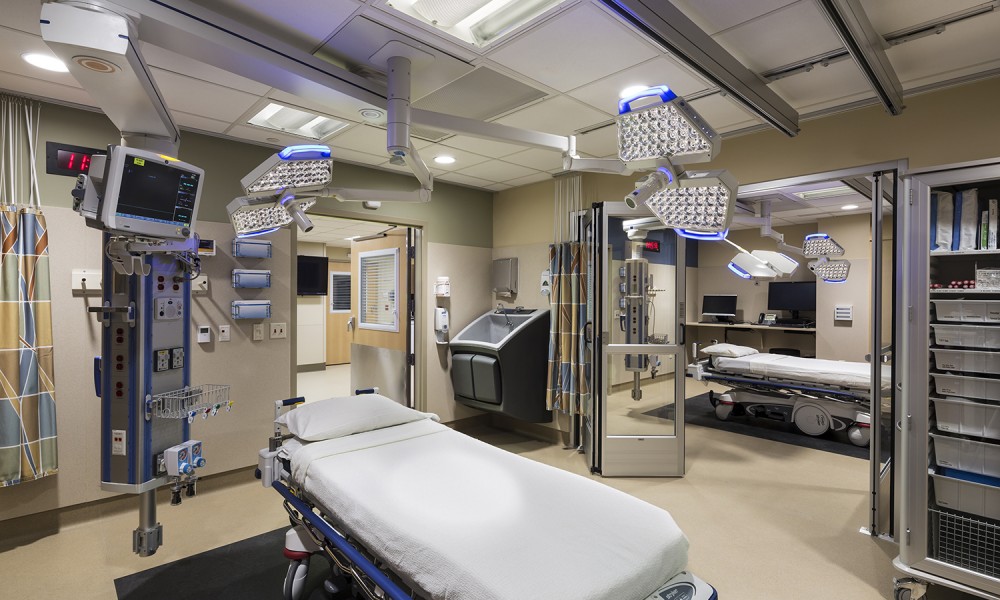Gundersen Health System Opens Environmentally Healthy Hospital
MINNEAPOLIS, Minn. — A new critical care tower officially opened at Gundersen Health System’s La Crosse, Wis. campus. Part of a campus renewal master plan, this project will allow Gundersen to continue providing outstanding care for the residents of southeast Wisconsin for the next decade. It also provides a benchmark in sustainable design and building practices for the healthcare industry nationally.
The 500,000-square-foot Legacy Building includes a new hospital entrance, lobby, emergency center, imaging center, interventional services, pediatric care, neonatal intensive care, private rooms for all patients and other key programs.
Taking inspiration from the Mississippi River Valley, the project uses elements from its surroundings to enhance the patient experience and healing process. Large windows, natural materials, roof plazas and a new entrance plaza over a sub-terrain parking structure give patients a strong sense of the natural environment.
“The team knew that sustainability does not come from just spending more, but from making the right decision, which often saves money over time” said Matt Sanders, AECOM’s lead designer for the project. “The best value has to be considered in terms of operational needs, environmental impacts and cost. Balancing these factors requires deeper, more holistic thinking at the beginning. For instance, we selected a substantially higher-performing glass over a less expensive product because we judged the overall value to be superior.”
Gundersen aims to reduce energy consumption in the Legacy Building from the national average of 240-280 kBTU to 115kBTU, putting it among the top 1 percent of energy-efficient hospitals in the region and top 5 percent in the country.
The major contributor is a geothermal heat system, which moves water back and forth from the building to underground wells. The earth’s subsurface temperature remains constant throughout the seasons. The water thus brings heat to the building in the winter and removes it in the summer. The heat from medical equipment is also captured and reused throughout the campus.
As impressive as the energy measures are, the building planning will transform how care is provided in all the major departments of the hospital. In the emergency department, a new model was designed that allows patients to enter from one side of a treatment room and physicians from the other. This will reduce wait times and provide more flexibility. All interventional services, such as general ORs, CVOR, cath labs, brain lab and interventional radiology, have been co-located on the same floor. These adjacencies will provide more efficient use of support space and staff resources. The new nursing units incorporate the latest in healing environment thinking, as well as personal environmental controls and education at each patient’s bedside.
AECOM led the master planning, medical planning, architecture and engineering for the Gundersen critical care tower. Kraus Anderson Construction provided construction management.
Photo courtesy of Don F. Wong.
Posted January 20, 2014
More Articles:
- CxA Workshop & Exam
Apr 29, 2024 – Apr 30, 2024 - EMP Seminar & Exam at CxEnergy 2024
Apr 29, 2024 – Apr 30, 2024 - CxEnergy
Apr 29, 2024 – May 2, 2024 - PHCC West 2024
Apr 29, 2024 – May 2, 2024 - Lean in Design Forum 2024
May 1, 2024 – May 2, 2024 - IFMA’s Facility Fusion Conference & Expo
May 5, 2024 – May 7, 2024 - ASHE Academy 2024
May 6, 2024 – May 10, 2024











